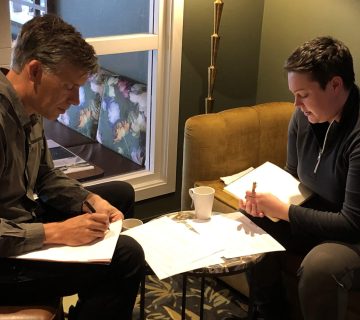What could happen after a mega-fire strips your natural heritage and all purpose from your interpretation?
Since the ’90s, the Dadia National Park in NE Greece attracted visitors from all over Europe. The reason was simple: 428 sqkm of Mediterranean forest with an impressive variety of birds of prey. Here the mild human activities were enriching instead of harming biodiversity, which included species of birds, mammals and reptiles. The star of it all was the Cinereous Vulture, one of the four European vultures, which chose Dadia as its sole nesting ground in SE Europe.
Interpretive services included a visitor centre, an observation post and hiking paths, whilst carrying capacity and safety rules were accepted by both visitors and inhabitants. Locals had been trained to offer interpretive walks, and the local community felt proud and lucky as the stewards of this place and its ‘kartalia’, as they call all raptors.It only took 17 days to abruptly change everything. A mega-fire that started in mid-August 2023, after weeks of unprecedented heat and drought, burnt almost 940 sqkm, exceeding by far the limits of the national park and having the sad privilege of being the biggest recorded wildfire in Europe since 2000.
A year on, nature is recovering. Scientific monitoring shows that most birds still nest here, and natural forest regeneration has begun. And yet the sense of the place is completely different. The vast green areas of pines and oaks have turned to black, causing ominous thoughts and pessimistic feelings. The fire affected interpretation too. The content of the visitor centre now seems almost irrelevant, the observation post is burnt to the ground, and local guides feel overwhelmed by the huge loss. Finally, the fire and its effects have been extensively communicated by mass and social media, giving a sense of complete disaster, and dissuading people from visiting the area.
For all these reasons, when the management of the Dadia NP contacted us, Alli Meria, for help, it was obvious that a new narrative had to be found, along with new or updated interpretive services to match today’s situation. To achieve this, it was necessary for all NP employees (scientists, local guides and rangers, management) to bring forward their own knowledge, understanding, creativity and ideas. We decided that we would be more useful as facilitators of that discussion, offering our interpretive expertise when wrapping all the above into a new narrative that emphasises concepts like rebirth, resilience and adaptability.
Time and money were limited, but it was still obvious that the only way to develop an interpretive proposal that would prove useful and resilient, and that would re-establish optimism for the local people would be to co-create it with those who knew, first-hand, the previous and current situation.
The project is now over, and its effect remains to be seen. But on a broader scale, signs are already positive: this process offered a renewed sense of purpose to the NP employees, the Ministry of Environment supported our reasoning, understanding the challenges that the climate crisis has on heritage interpretation. And whilst we all wait patiently for the Dadia forest to recover, visitors have a reason to come back.
Valya Stergioti is the founder of Alli Meria, an interpretive consultancy agency. Through projects in Greece, Europe and Africa, Alli Meria empowers local communities so they can create their own interpretive content and services. She can be contacted at: vster@outlook.com.
To cite this article: Stergioti, Valya (2024) ‘Co-creating interpretation from the ashes‘ in Interpret Europe Newsletter 3-2024, pg.16.
Available online: PDF-Newsletter_2024_3.pdf




